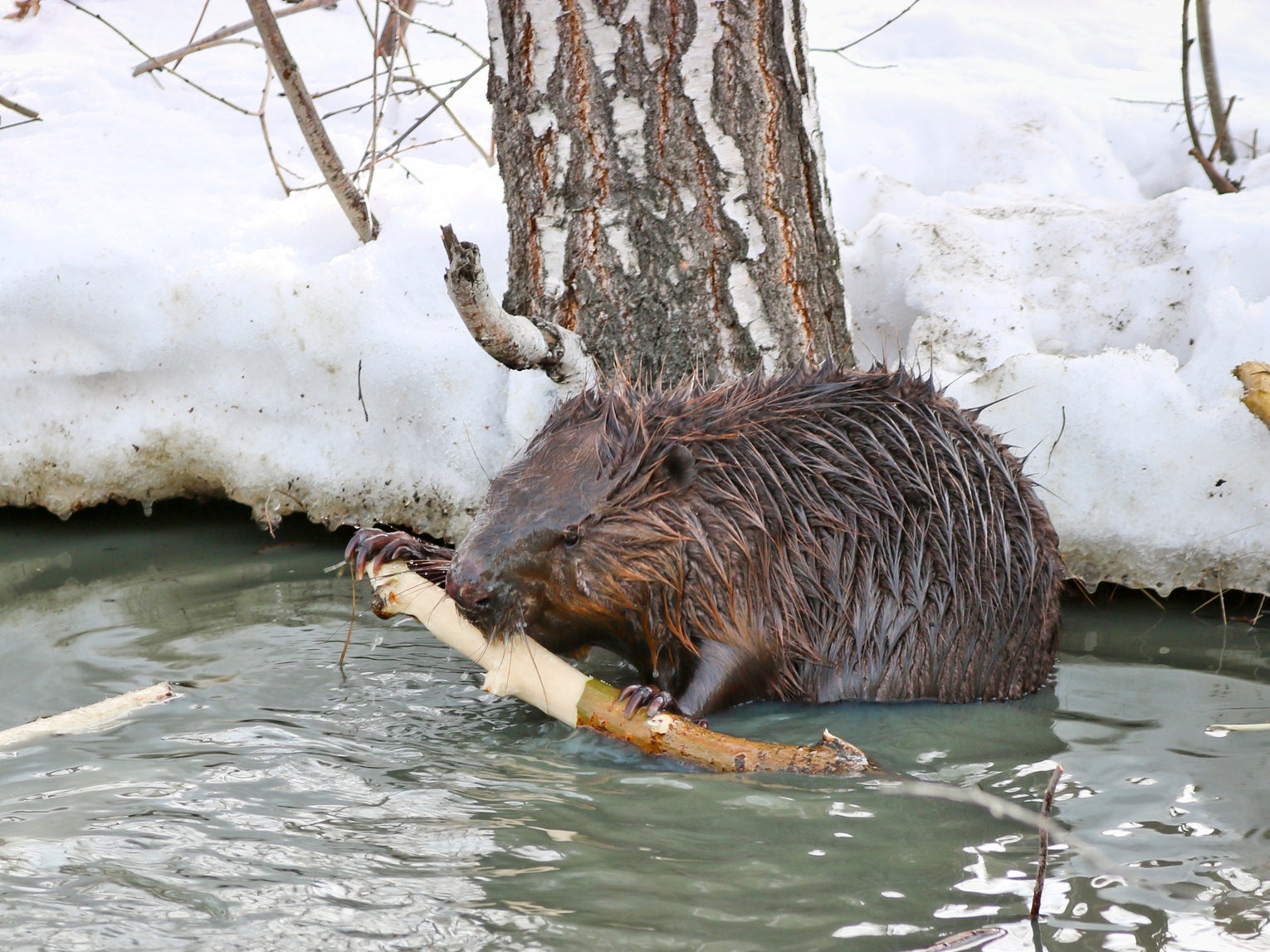This website uses cookies so that we can provide you with the best user experience possible. Cookie information is stored in your browser and performs functions such as recognising you when you return to our website and helping our team to understand which sections of the website you find most interesting and useful.

Rising temperatures in the Arctic, due to humans’ runaway pollution of the planet, is forcing many animals and plants to adapt to rapidly changing conditions or face extinction.
One species apparently taking advantage of the retreating ice and snow is the beaver.
A booming beaver population in Alaska is now feared to be exacerbating humans’ destruction of the natural world, a study suggests.
Researchers from universities in Germany and the US have found over recent years beavers have expanded into many tundra regions where they’d never been seen before and are building more and more dams in their new homes, creating a host of new water bodies.
They warn this move north could accelerate the thawing of the permafrost soils, and therefore intensify processes contributing to climate change.
“Of course, we knew that the beavers there had spread substantially over the last few decades,” said co-author of the study, Ingmar Nitze from the Alfred Wegener Institute, Helmholtz Centre for Polar and Marine Research, in Potsdam.
“This is partly due to climate change. Thanks to rising temperatures, now more and more habitats offer the shrubs that the animals need for food and building material. Furthermore, the lakes, which used to freeze solid, now offer beaver-friendlier conditions, thanks to their thinner seasonal winter ice cover. Lastly, the rodents aren’t hunted as intensively as in the past. As a result, it’s a good time to be a beaver in the Arctic.
“But we never would have dreamed they would seize the opportunity so intensively.”
The researchers used high-resolution satellite images of a roughly 100-square-kilometre study area near the town of Kotzebue. They found that from just two dams in 2002, the number had risen to 98 by 2019 — a 5,000 per cent increase, with more than five new dams being constructed per year.
A larger area surveyed, which covers the entire northern Baldwin Peninsula, also experienced a beaver dam boom.
Dr Nitze said: “We’re seeing exponential growth there. The number of these structures doubles roughly every four years.”
Over the course of the 17-year timeframe studied, the overall water area in the Kotzebue region grew by 8.3 per cent and roughly two-thirds of that growth was due to the beavers, the research team said.
The polar region is in the grip of a cyclical overheating phenomenon known as Arctic amplification which is rapidly raising temperatures and causing ecological havoc.
As the ice and snow melts, uncovering ever larger tracts of ocean and land, the seas heat up and the permafrost thaws — releasing methane and providing ready fuel for the increasing numbers of wildfires that release stored carbon and further exacerbate the problem.
The problem is rapidly worsening. Thomas Smith, assistant professor in environmental geography at LSE, this week said fire emissions from the Arctic during June 2019 and June 2020 amounted to 30.5 megatonnes of carbon — a greater quantity of the pollutant than was released by all of the fire emissions from the Arctic during the previous 16 Junes from 2003 to 2018, which released 29 megatonnes of carbon.
Meanwhile, some of the plants and animals that inhabit the various regions including the ice cap, the seas, the tundra and the forested areas have been forced to adapt to the new conditions. Many others face extinction.
The beaver is a keystone species, which means its presence in an environment results in increasing biodiversity, largely due to its creation of ponds and wetlands. The species was almost hunted to extinction by the arrival of Europeans in America due to demand for their fur.
As well as creating environments that support other species, beavers also have many common natural predators in the US and Canada, including coyotes, wolves, mountain lions and black bears.
The Eurasian beaver – a different species to those found in the Americas – has been reintroduced in the UK more than 400 years after it was hunted to extinction. The return of the species has been credited with cutting flood risks, cleaning rivers and boosting wildlife.
Since 1 May 2019, it has been illegal to kill beavers or destroy established dams and lodges in Scotland without a licence as they now have European Protected Species status.
But farmers and landowners — who consider beavers a pest because their dams can cause flooding on farmland and damage crops — have often been criticised for killing them in cruel ways.
The research team behind the study into the impact on permafrost said they suspect there have been construction booms in other regions of the Arctic and as a result they now want to expand their “beaver manhunt” across the Arctic.
“The growth in Canada, for example, is most likely even more extreme,” said Dr Nitze. “And each additional lake thaws the permafrost below it and on its banks. Granted, the frozen soil could theoretically bounce back after a few years, when the beaver dams break; but whether or not the conditions will be sufficiently cold for that to happen is anyone’s guess.”
He added: “Anyone who wants to predict the future of the permafrost should be sure to keep the beaver in mind.”
The new research is published in the journal Environmental Research Letters.



 Africana55 Radio
Africana55 Radio 

